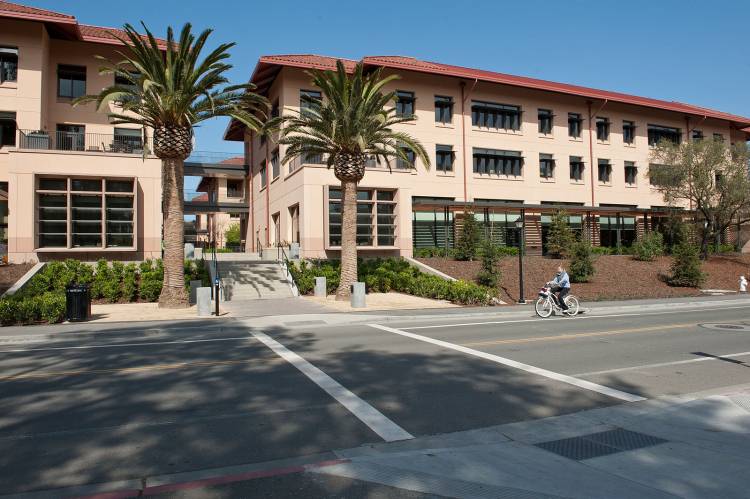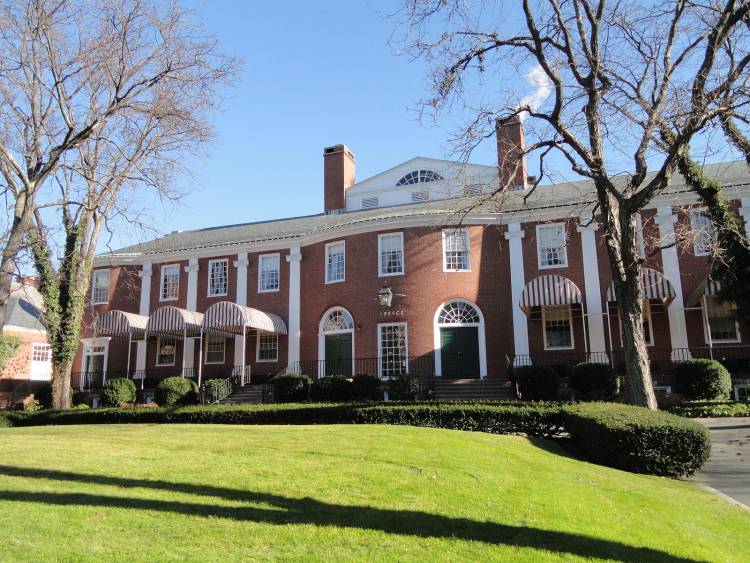If you’re fortunate enough to secure a place at Harvard Business School and Stanford Graduate School of Business, you could not make a bad choice between them. They are among the oldest and most respected business schools on the planet, both consistently ranked in the top-three of prestigious global rankings, such as the Financial Times.
The quality of the courses at Harvard and Stanford, the power of the alumni networks and the brand associated with the two titans of MBA education, are near-unparalleled.
While both schools will serve you exceedingly well, there are significant differences between them, in terms of student culture, learning style and career outcomes. Even the weather (location) can be a factor in choosing between both programs.
Harvard vs. Stanford: Location and MBA career outcomes
One of the biggest differences between the two schools is the location, which has a huge impact on the career destination of Harvard and Stanford graduates.
 Stanford is located in the heart of Silicon Valley in San Francisco, putting students in very close proximity to technology companies, entrepreneurship, innovation and venture capital. Harvard, on the other hand is located in Boston on the East Coast, which is known more for financial services and management consulting.
Stanford is located in the heart of Silicon Valley in San Francisco, putting students in very close proximity to technology companies, entrepreneurship, innovation and venture capital. Harvard, on the other hand is located in Boston on the East Coast, which is known more for financial services and management consulting.
The location of each school tends to influence where students from the schools end up career-wise, though MBA students from these top schools are valued in virtually all industries.
From its Rock Center of Entrepreneurship to the iLab, Harvard has invested a great amount of resources in entrepreneurship and innovation over the past few years. The school has also experienced a strong showing in terms of its graduates starting businesses and becoming major players in the investment world both in Silicon Valley and beyond.
However, Stanford still dominates in the area of tech and entrepreneurship. It permeates the culture, the discussions and the case examples, more so than at Harvard, says Chioma Isiadinso, founder of the Expartus admissions firm in New York. Previously, she worked in Harvard’s admissions office.
“By being located on the West Coast, I knew that studying at Stanford would increase my chances of finding [job] opportunities in the Bay Area within the entrepreneurship and tech sectors, which fit my short term goals,” says current Stanford MBA student Thalia Elena Hernandez Duran, who also applied to Harvard.
According to Stanford, 16 percent of its class of 2017 pursued entrepreneurial ventures. Of Harvard’s 2017 class, 64 of its 900 students — or about 7 percent — went on to found businesses.
While Stanford maintains a strong entrepreneurship and tech edge with its connections and location in Silicon Valley, Harvard alumni are also well represented in the Valley, too.
Both schools also excel at placements in the consulting and financial services industries. Twenty-three percent of Harvard’s MBA class of 2017 went into the consulting industry, as did 20 percent of that year’s Stanford cohort.
Around one-third of each school’s MBA class goes into financial services each year.
Also notable is the sheer size of the Harvard alumni network (with its 46,000-plus MBA alumni compared to Stanford’s 18,000-plus), which can help students secure jobs.
Harvard vs Stanford: MBA admissions requirements, selectivity and class profiles
Both schools are looking for talented, intellectually curious and engaged individuals who contribute to each community.
They are two of the toughest schools to get into. The acceptance rate for the class of 2019 at Harvard was 11 percent and an estimated 6 percent at Stanford. The selectivity of both schools can be seen in the GMAT scores of their admitted students. Stanford has the highest reported score of the top MBA programs (the average GMAT this year is 737 and the range is 610-790).
 Harvard also boasts superior GMAT scores, with a median score of 730 and a range of 580-790. The average GPA of admitted students at both schools is extremely high, too, with Stanford’s at 3.74 and Harvard’s at 3.71.
Harvard also boasts superior GMAT scores, with a median score of 730 and a range of 580-790. The average GPA of admitted students at both schools is extremely high, too, with Stanford’s at 3.74 and Harvard’s at 3.71.
The class sizes at both schools differ drastically, with Harvard this year enrolling 928 students and Stanford enrolling less than half that: 418. Given the class size difference, the students at Stanford tend to know more of their classmates, say admissions consultants and former students. In comparison, students who enjoy being in large environments where they can maintain some anonymity may find Harvard a better fit.
“Candidates have to consider whether they like the more ‘aggressive’ culture of HBS or the more laid-back culture of Stanford,” says Isiadinso.
She adds that there seems to be a stronger emphasis on being less overt about one’s achievements at Stanford than at Harvard.
“The West Coast vibe of being laid back does carry through at the GSB. Students form close bonds at both institutions, but Stanford GSB has a slight edge in having a culture that fosters a close-knit community,” the consultant says.
Hernandez Duran adds: “By having a very integrated class, there is possibility to participate in many social events that range from small group dinners, large social events on campus, club-led parties, sports events like C4C, and student led trips. ‘GSBers’ are always looking for new and fun opportunities to try new things with other classmates.”
Harvard vs. Stanford: MBA program comparison
Harvard’s curriculum requires all students to experience the same courses with no exceptions in the first year. Students find flexibility in their second year where they are able to select elective courses.
The teaching methodology, with its primary focus on the case method, exposes students to 500 cases. The experience builds students’ confidence and communication skills. In the winter, students at Harvard gain real life experience through the Field Immersion Experiences for Leadership Development (FIELD), working with a small group of their classmates in the real world, putting into practice what they have learned.
Stanford is more flexible. Its curriculum is structured on a quarterly system and is highly personalized. It gives students a foundation in General Management Perspective (eight courses) and General Management Foundation (11 courses), and a global experience during their first year.
Stanford combines case studies with lectures, team projects, and role playing, offering more diversity in its teaching methods than at Harvard, says Isiadinso.
“Students who don’t feel comfortable being ‘on’ every day in the case context of HBS may find the GSB a better fit,” she adds.
Image Credits:
- Shoot of the Stanford Knight Management Center, home of the Stanford Graduate School of Business, seen from Serra Street by Steve Castillo / CC BY 3.0
- Harvard Business School, Allston, Boston, Massachusetts, USA by Daderot / Public Domain










